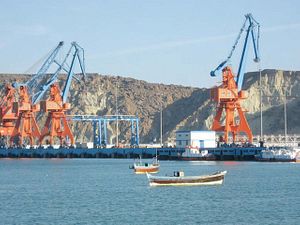China’s One Belt, One Road (OBOR) strategy signals a global infrastructure spending spree worth an estimated $1 trillion but it ignores a crucial factor: namely, that China has a patchy record of delivering efficient projects both at home and abroad.
Research by Atif Ansar, Bent Flyvbjerg, Alexander Budzier, and Daniel Lunn of Oxford University’s Said Business School into large infrastructure projects delivered in China found that over half were poorly managed, featuring cost overruns, lack of real economic benefit in the areas where the projects are built, and little in the way of returns to investors.
Tellingly for the OBOR strategy’s prospects, the findings from this research concur with objections to infrastructure project delivery in many of the countries being targeted in China’s OBOR strategy, such as Nigeria, Indonesia, Myanmar, Pakistan, Sri Lanka, and Saudi Arabia.
In most cases, China’s overseas infrastructure forays stress the geopolitical value of the projects, rather than their economic value. China’s drive to build its political influence in Africa and Asia through infrastructure has resulted in faulty power plants in Botswana and loss-making railway projects in Laos.
China doesn’t always offer the best value to partnering countries. Projects are often tied to political pacts through which China’s state-owned enterprises get exclusive bidding rights, as opposed to competitive tenders between SOEs and other international firms. Research by the Economist Intelligence Unit shows that in the case of Kenya, Chinese companies have delivered the centerpiece Standard Gauge Railway at a cost of $5.6 million per km, close to three times the international standard and four times the original estimate.
Poorly chosen projects funded by cheap loans from China’s may undermine the host countries’ ability to repay debts, which may ultimately put pressure on China’s banks. China has extended huge credit lines, estimated by Fitch Ratings at some $900 billion so far, to support the OBOR strategy, with much of the money being channeled into countries where the risk of debt default is high, such as Kenya, Ethiopia, and Sri Lanka.
Given the speed at which the Chinese government is hoping to expand the OBOR strategy, the above factors raise the risk of ultimately dampening its effectiveness and undermining China’s efforts to expand its global influence.
With the project worth an estimated $1 trillion, and with persistent concerns about China’s own indebtedness, that’s a large gamble to take.
































